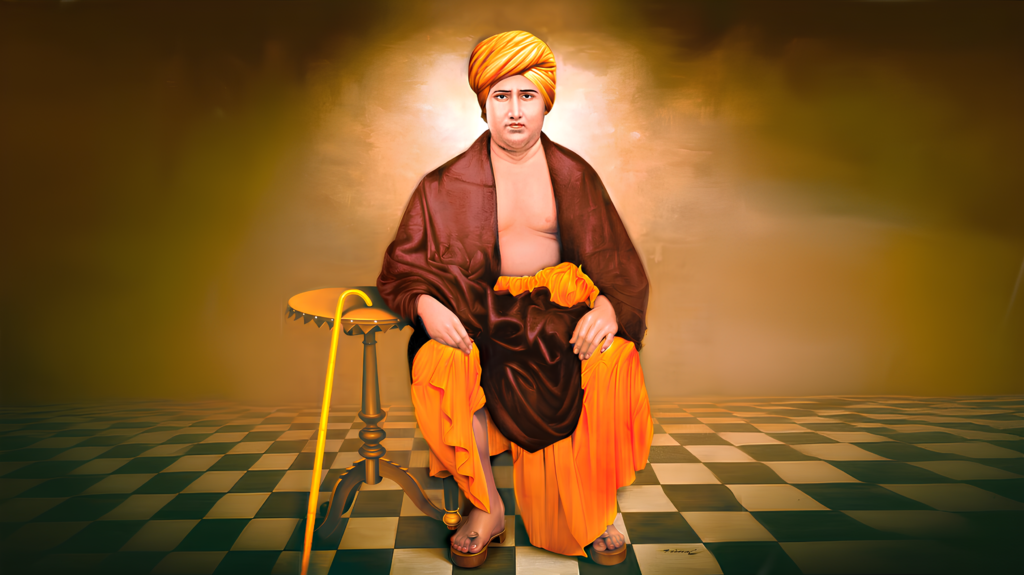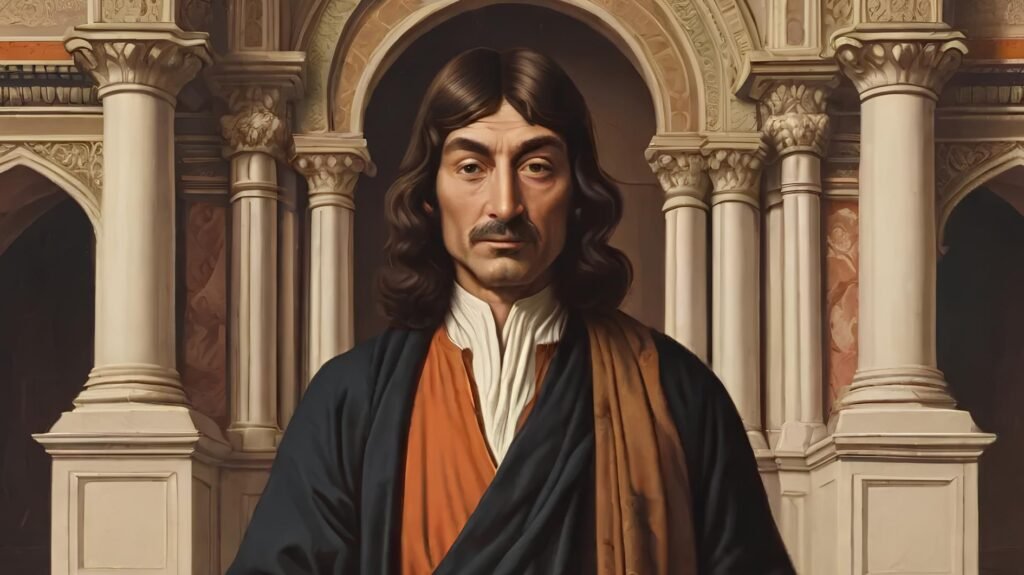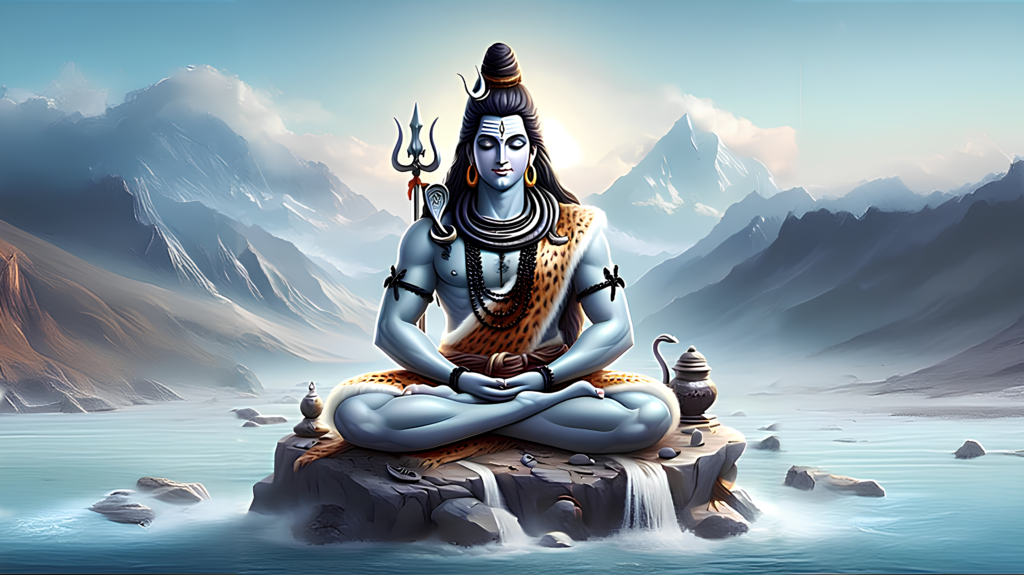Understanding the Concept of Maharishi Dayanand Saraswati’s “Traitavad”

Namaste Shiksharthis! Today, we’re going to embark on a journey into the fascinating world of Indian philosophy, specifically a concept known as “Traitavad.” Now, I know that it might sound a bit complex or intimidating, but don’t worry. We’re going to break it down together in a way that’s easy to understand and even a little bit fun.
By the time we’re done, you’ll not only understand Traitavad but might even find yourself thinking about the world around you a little differently but before we dive into Traitavad itself, let’s set the stage by talking about three major beliefs regarding how the universe was created.
The Three Philosophical Beliefs About Creation
Monism (Ekattvavad): The Oneness of Everything
Imagine a world where everything—every rock, tree, animal, and person—is made from the same stuff. This idea is called Monism. People who believe in Monism think that the universe and everything in it comes from a single source or substance.
But what is this substance? Well, that’s where things get interesting. Some people believe this substance is something non-living, like energy or matter. Others, like the famous philosopher Shankaracharya, believe this substance is actually a conscious being—something like God. According to Shankaracharya, there’s no real difference between the creator (God) and the creation (the universe). Everything is one and the same, just appearing in different forms. It’s a bit like making a lot of different shapes out of a single lump of clay. No matter what shape you make, it’s still the same clay.
When we think of Monism, Shankaracharya often comes to mind as the central figure. However, many other philosophers across India have also contributed significantly to this philosophy. For instance, in Kashmir, thinkers like Abhinavagupta have elaborated on a similar concept through the lens of Shiva, proposing that Shiva is the supreme consciousness, and that all existence is a manifestation of Shiva. This is known as Advaita Shaiva Philosophy. If you want to learn more about the Advaita Shaiva Philosophy, you can watch our YouTube video here and if you want an in- depth knowledge for the same you can enroll in our Advait Shaiva Philosophy course from here.
Dualism (Dvaitavad): The Two Key Ingredients
Now, let’s talk about Dualism. It says that the universe is made of two main parts: non-living matter (like nature), also called the non-conscious Prakriti, and a conscious being (like a soul or spirit), known as Purusha in Hindu Philosophy.
Think of it like making a smoothie. You need fruits (which represent the non-living matter or Prakriti) and a blender (which stands for the conscious being or Purusha) to mix everything together. In Dualism, both of these parts are necessary to create the universe. It’s not just one thing doing all the work—both the non-conscious Prakriti and the conscious Purusha are equally important.
Traitavad: The Three Eternal Entities
Finally, we come to Traitavad. This belief is a bit more complex than the first two, but don’t worry, we’ll break it down.
Traitavad is the idea that there are three eternal entities that explain the creation and functioning of the universe: God, the individual soul, and nature. These three entities have always existed, and they each play a crucial role in how the universe works.
Let’s think of it like putting on a play. To put on a successful play, you need three things:
- The Director (God): The one who has the vision and knows how everything should come together.
- The Actors (Individual Souls): The ones who bring the story to life and interact with each other.
- The Stage and Props (Nature): The setting where everything takes place and the tools the actors use.
Just like you need all three of these elements to put on a play, Traitavad explains that God, individual souls, and nature are all necessary for the creation and functioning of the universe. None of them can do it alone—they need to work together.
In the eighth chapter of his book Satyarth Prakash, Swami Dayanand discusses how these three entities—God, souls, and nature—each play a crucial role in the creation, maintenance, and dissolution of the universe. But how exactly do they do that? Let’s explore.
A Simple Example to Understand Traitavad
To make things even clearer, let’s use a simple, everyday example: baking a cake. Yes, you heard that right—baking a cake! This example will help us understand how the three entities in Traitavad work together to create the universe.
Baking a Cake: The Three Necessary Elements
- The Baker (God): The one who knows how to bake and has the power to create the cake. The baker is in charge of the whole process and makes sure everything comes together perfectly.
- Ingredients (Nature): The flour, sugar, eggs, and other materials that are used to make the cake. These ingredients are the building blocks of the cake—they provide the substance and flavor.
- Tools (Individual Souls): The mixing bowl, oven, and other tools that help in the process of making the cake. These tools are essential for putting the ingredients together and baking them into a finished cake.
Now, if you remove any one of these elements, you can’t bake a cake. Without the baker, there’s no one to bring everything together. Without the ingredients, there’s nothing to make the cake out of. And without the tools, you can’t mix or bake the ingredients.
This is exactly how Traitavad explains the creation of the universe. God (the baker), individual souls (the tools), and nature (the ingredients) are all necessary for the universe to exist. None of them can do it alone—they need to work together.
Swami Dayanand explains three types of causes that lead to the creation of anything. Understanding these causes will help us better grasp the deeper meaning of Traitavad. Let’s take a closer look.
The Three Types of Causes (Karana) in Traitavad
Efficient Cause (Nimitta Karana): The Creator
The efficient cause is the one who makes something happen. In our cake example, the efficient cause is the baker—the person who brings all the ingredients together and bakes the cake. In the universe, the efficient cause is God. God is the creator who brings everything together to create the universe.
Material Cause (Upadana Karana): The Ingredients
The material cause is the substance or material from which something is made. For the cake, it’s the ingredients like flour, sugar, and eggs. These are the raw materials that the baker uses to create the cake. In the universe, this material cause is nature. Nature provides the raw materials that God uses to create the world.
Instrumental Cause (Sadharana Karana): The Tools
The instrumental cause is the tools or instruments used in making something. For the cake, it would be the oven, mixing bowl, and other tools that help in the baking process. In the universe, these are the different powers, energies, and tools that God uses to create and maintain the world.
By understanding these three types of causes, we can see how Traitavad explains the creation of the universe in a logical and organized way. Just like in baking a cake, all three causes—the creator, the materials, and the tools—are necessary for the universe to come into being.
Why Did God Create the Universe?
A common question that comes up when discussing Traitavad is, “Why did God create the universe?” It’s a big question, and Swami Dayanand provides a simple yet profound answer.
The Purpose of Creation
Swami Dayanand explains that God’s creation of the universe is similar to how our eyes are made to see. Just as it’s natural for our eyes to see, it’s natural for God to create. The creation of the universe is a natural expression of God’s power and wisdom.
Imagine asking why a singer sings or why an artist paints. The answer is simple: because it’s in their nature to do so. Singing and painting are natural expressions of their talents. Similarly, God creates the universe because it’s His natural function, just like it’s natural for the sun to shine or for water to flow.
In this way, the creation of the universe is not just a random act. It’s a purposeful and natural expression of God’s abilities. Without creating the world, God’s power and wisdom would have no outlet, just as an artist’s talent would be wasted if they never created art.
Understanding God’s Power
When we talk about God’s power, some people might wonder, “If God is all-powerful, can He do anything, even things that don’t make sense?” For example, can God create another God or make Himself die? These are tricky questions, but Swami Dayanand has a clear answer.
The Nature of True Power
Swami Dayanand teaches that true power doesn’t mean doing impossible or contradictory things. God’s power is perfect, which means He creates the universe in a way that makes sense and follows certain rules. God doesn’t need to do impossible things to prove His power.
Think about it this way: If a magician performs a trick that doesn’t make sense, it might seem impressive, but it’s not real magic—it’s just an illusion. Similarly, God’s power is not about creating illusions or doing things that are logically impossible. Instead, it’s about creating and maintaining the universe in a way that is perfect, orderly, and purposeful.
This understanding helps us appreciate the greatness of God’s power in a more meaningful way. Rather than thinking of God as a being who can do anything, even the impossible, we see God as a being who uses His power in the best and most logical way possible.
Conclusion: Bringing It All Together
Traitavad teaches us that the universe is the result of the combined roles of three eternal entities: God, individual souls, and nature. Each of these entities has always existed and plays a crucial role in the creation, maintenance, and dissolution of the universe.
Just like baking a cake requires a baker, ingredients, and tools, the creation of the universe requires God, souls, and nature to work together. Swami Dayanand’s explanations help us understand that creation is not a random act, but a well-organized process that reflects the perfect nature of God.
Next time you see something being made—a cake, a bridge, or even a painting—remember the three causes: the creator, the material, and the tools. And think about how, just like in Traitavad, nothing in this world comes into existence without a reason or a cause.



Thank you very much for the excellent explaination of the traivade theory. Namo namaha.